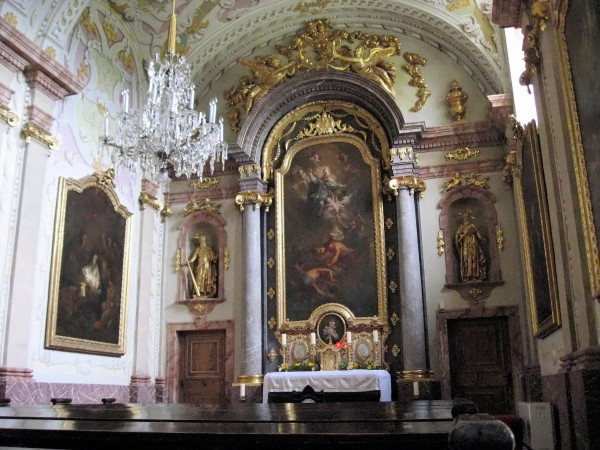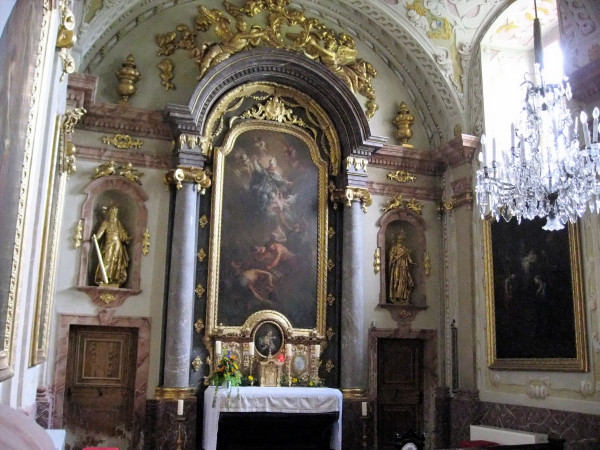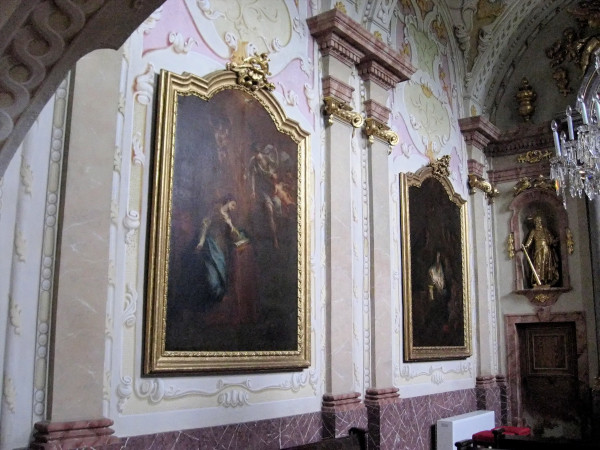The castle in the Traisen Valley in Lower Austria
dates back to the time of the Babenbergs. When Margrave Leopold II gave his daughter Elisabeth to Margrave Otakar II of Styria as his wife around 1085, she brought her husband rich property in the upper Traisen and Göls valleys. The area around Ochsenburg was also part of this, but the Styrian soon gave it to ministerials. After several changes of ownership, Ochsenburg passed to the monastery of St. Pölten in 1383.

Grafic by G. M. Vischer from 1672 (
The medieval castle was rebuilt into a Renaissance-style castle in the course of the 16th century. The baroque south wing was built under Jakob Prandtauer around 1698. After the war, the Ochsenburg was renovated.
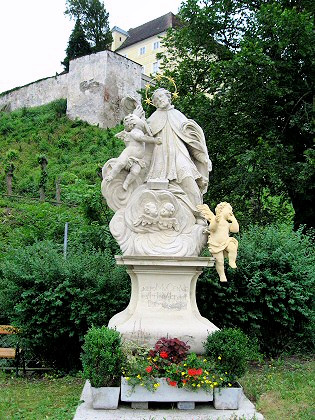
A statue of St. John Nepomuk stands at the end of the Traisen Bridge, at the ascent to Ochsenburg Castle.
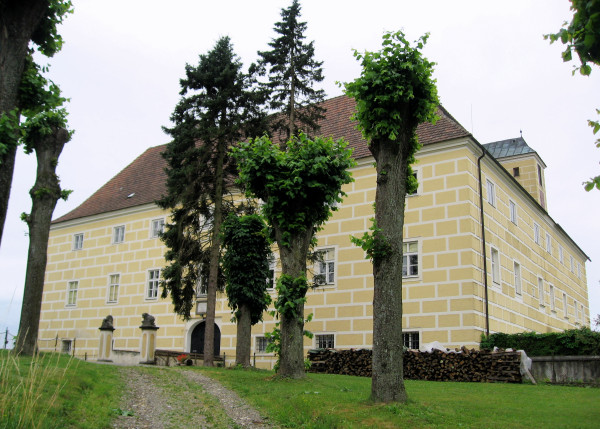
This is how Ochsenburg Castle presented itself in July 2010.
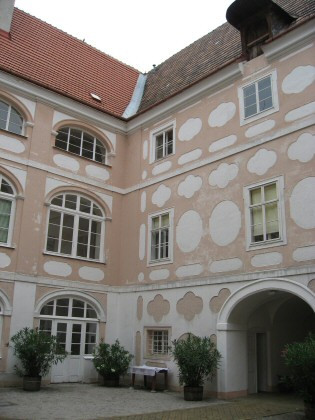
Here is a view of the inner courtyard, which is normally closed to visitors. The castle cannot be visited.
The arcades were originally open.
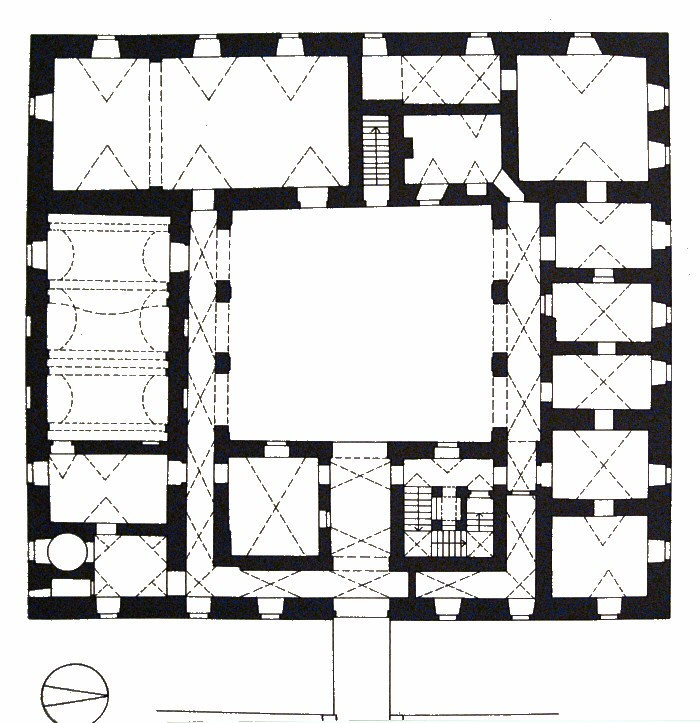
Copy of the building plan of the Ochsenburg by Jakob Prandtauer (source: exhibition in the St. Pölten City Museum on the occasion of his 350th birthday). To enlarge, click on the plan!

The bishop's coat of arms in the arcade in front of the castle chapel
In the 18th century, the St. Nicholas Chapel in the castle was redesigned, with Martin Johann Schmidt (called Kremser Schmidt) playing a decisive role.
The altarpiece depicts St. Nicholas. Four other paintings by Kremser Schmidt have the life of St. Mary as their theme.
The castle was used as a summer residence by the bishops of St. Pölten, but was to be sold. Since no buyer was found by mid-2011, it was renovated and can now be rented for celebrations.
